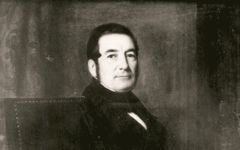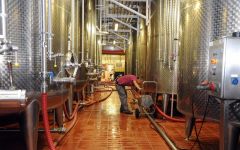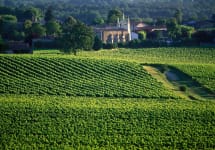Calvet Saint-Emilion Reserve des Remparts 2013


Product Details
Your Rating
Somm Note
Winemaker Notes




Calvet, one of the oldest French wine brands in the world, was founded in 1818 by Jean-Marie Calvet. He was born in 1789 in Anse, a small village north of Lyon. From his mother, whose family owned vineyards in Tain-l’Hermitage in the Rhône Valley, he inherited a passion for wine, founding Calvet in 1818 to commercialise the family’s wines. As Bordeaux was one of their biggest markets, Jean-Marie and his son Octave built warehouses in Bordeaux, opened an office in 1849, and expanded to Burgundy in 1870, to become the largest wine company in France in the 19th and most of the 20th century.
While Calvet was sold in New York as early as 1882, its focus was primarily Europe, Argentina and Asia, and as a result, its presence in the USA had all but disappeared by the late 1990s. Sixth generation négociant and direct descendant Jean-Christophe Calvet, and his eldest son Jean-Sebastien Calvet, are reintroducing the Calvet brand back into the USA market since 2017.
Calvet Brut is a sparkling wine from the Crémant de Bordeaux appellation and made with the me´thode champenoise. As a result, it follows the sample production principles as the famous Champagne region. All grapes are harvested manually, secondary fermentations (Prise de mousse) occurs in the bottle and there’s a minimum of 12 months of aging on the lees before it’s bottled. The vintage is declared every year, which emphasises the quality and the typicity of the vintage. The grapes used are Merlot, Cabernet Franc and Semillon, which are indigenous to the region.
Bordeaux has produced sparkling wines for well over 100 years, but the appellation Crémant de Bordeaux, was not made official until 1990. Production remains relatively small as represents less than 1% of the total Bordeaux production.
Today, Calvet makes a Brut Blanc and Brut Rosé Crémant de Bordeaux.

One of the world’s most classic and popular styles of red wine, Bordeaux-inspired blends have spread from their homeland in France to nearly every corner of the New World. Typically based on either Cabernet Sauvignon or Merlot and supported by Cabernet Franc, Malbec and Petit Verdot, the best of these are densely hued, fragrant, full of fruit and boast a structure that begs for cellar time. Somm Secret—Blends from Bordeaux are generally earthier compared to those from the New World, which tend to be fruit-dominant.

Marked by its historic fortified village—perhaps the prettiest in all of Bordeaux, the St-Émilion appellation, along with its neighboring village of Pomerol, are leaders in quality on the Right Bank of Bordeaux. These Merlot-dominant red wines (complemented by various amounts of Cabernet Franc and/or Cabernet Sauvignon) remain some of the most admired and collected wines of the world.
St-Émilion has the longest history in wine production in Bordeaux—longer than the Left Bank—dating back to an 8th century monk named Saint Émilion who became a hermit in one of the many limestone caves scattered throughout the area.
Today St-Émilion is made up of hundreds of independent farmers dedicated to the same thing: growing Merlot and Cabernet Franc (and tiny amounts of Cabernet Sauvignon). While always roughly the same blend, the wines of St-Émilion vary considerably depending on the soil upon which they are grown—and the soils do vary considerably throughout the region.
The chateaux with the highest classification (Premier Grand Cru Classés) are on gravel-rich soils or steep, clay-limestone hillsides. There are only four given the highest rank, called Premier Grand Cru Classés A (Chateau Cheval Blanc, Ausone, Angélus, Pavie) and 14 are Premier Grand Cru Classés B. Much of the rest of the vineyards in the appellation are on flatter land where the soils are a mix of gravel, sand and alluvial matter.
Great wines from St-Émilion will be deep in color, and might have characteristics of blackberry liqueur, black raspberry, licorice, chocolate, grilled meat, earth or truffles. They will be bold, layered and lush.
